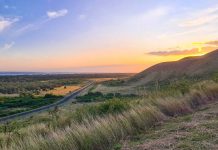Spending three days in Oita, I realised, there’s so much more to Japan than the familiar favourites of Tokyo, Kyoto, and Osaka.

While three days isn’t enough for a trip to Japan, this is an excellent add-on to your existing Japan itinerary. If it’s your first time to this lively country, check out our first-timer’s guide to Japan.
For these three days, you can expect onsens, old towns, exquisite sake, and scenic train rides. If that sounds like your type of trip, this Japan itinerary will get you planning your next trip faster than you can say “Japan Rail Pass”.
Where is Oita and How to Get There?

Oita prefecture is located on Kyushu island — Japan’s third largest island. From Singapore, you can fly directly to Fukuoka Airport, then hop on a 2-hour train ride to Oita Station.
Alternatively, you could catch a domestic flight to Oita Airport.
Getting to Oita via JR Kyushu

I flew into Fukuoka Airport and made my way to the airport’s subway station. Two stops from there is Hakata Station where the JR Line entrance is!
From there, I got on board the Yufu Limited Express — a bright red locomotive that gives off Hogwarts Express vibes.
You can also choose to take the Yufuin No Mori train! The Yufuin No Mori is pricier though but it has a gorgeous wood interior and extra perks like a bar counter! Either way, both trains go by the same scenic route and the journey is about two hours long.
*Pro-tip: Check train schedules beforehand and buy a ticket that fits your itinerary.
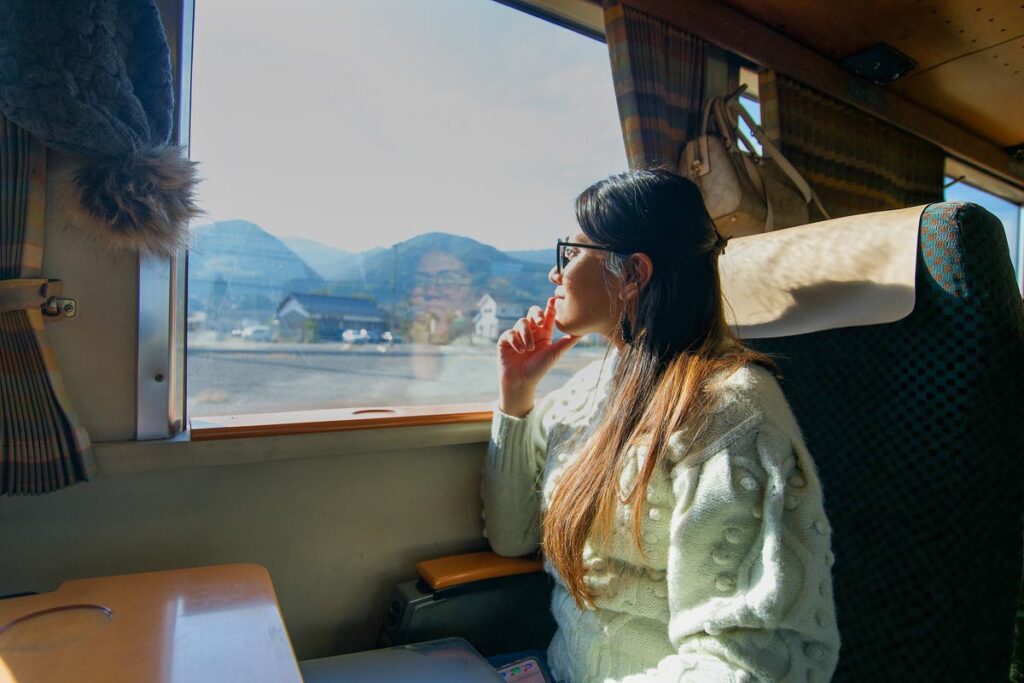
Food isn’t served on this train, but you can bring your own snacks and drinks on board. Seats were super comfy and the stowaway desk which was perfect to catch up on some work. But don’t forget to look out the window for the endless views of the countryside, paddy fields, and mountainous backdrops!
I got off at Yufuin Station and started exploring Oita prefecture from there.
Day 1: Yufuin & Kuju
Mount Yufu is the first thing you’ll see when you exit Yufuin Station. This town has lots of main attractions and is one of the busiest towns in Oita prefecture — but still extremely peaceful by Tokyo’s standards!
*Pro-tip: Rent a car once you’re in Yufuin — it’s the easiest way to get around Oita prefecture. Local guides recommend Toyota Rent-a-car!
From Yufuin, it’s about an hour’s drive up to the Kuju area where it will be a little colder in the winter but the elevation offers stunning views.
Yunotsubo Street

First up, Yunotsubo Street! This main street in Yufuin stretches for about 1 km and is lined with souvenir shops, snack stands, foot spas, and the likes. You’re gonna want to start the day here once you get off the Yufu train.
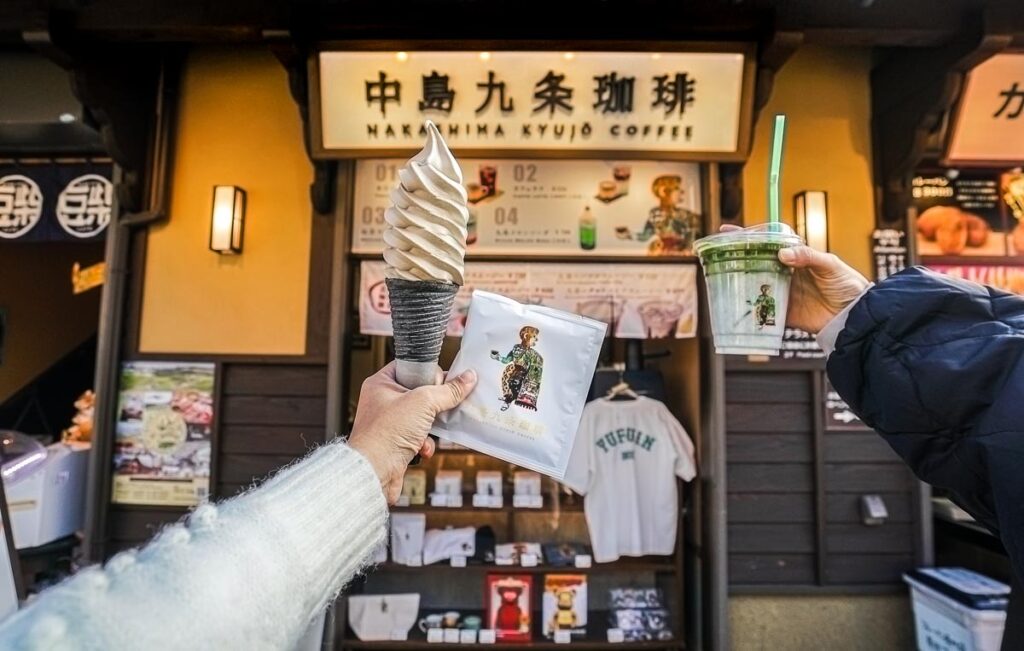
Soft-serve ice cream is everywhere here (and all around Oita, as I quickly learned). So I caved and tried this mixed vanilla-coffee cone (¥450) from Nakashima Kyujo Coffee. My guide got the matcha latte (¥650). People-watching while working on the cone was one of my favourite moments on Yunotsubo Street.
*Pro-tip: Follow Nakashima Kyujo Coffee on Instagram and show proof during payment for a free pack of instant coffee.

Even with newer and modern stores popping up, the OGs are still standing strong – like this kabosu paste store that’s been around before the 1950s. The owner is so sweet and friendly. She even puts out tasting jars so you can choose your faves before purchasing. I got two jars (¥600 each); one jar of the yuzu paste and another of the kabosu paste — a lime-based seasoning specially made in Oita!
There are so many things to eat, see, and do along Yunotsubo Street, I could have spent hours here.
Opening hours: 9AM – 5PM
How to get there: 5min walk from Yufuin Station. When you see a mass of crowds, you’re there! (Google Maps)
Kinrin Lake & COMICO ART MUSEUM YUFUIN

Yunotsubo Street will lead you directly to Kinrin Lake — unique because it’s a mix of freshwater and hot spring water. Since water temperatures are warm throughout the year, the lake is especially gorgeous on winter mornings when steam rises from the surface!

Photo credit: Yufu Tourist Information
It’s recommended to get here early and grab a spot at Cafe La Ruche; a coffeehouse that faces Kinrin Lake, to watch this phenomenon.
*Pro-tip: Bring your telephoto lens or binoculars if you’re into birds. You can easily spot cormorants, herons, and ducks here.

Within walking distance from Kinrin Lake, on the side of Yunotsubo Street, is COMICO ART MUSEUM YUFUIN — a space dedicated to displaying various works of Japanese artists.
When I was there, in January 2024, artistic works of the famed Yayoi Kusama were showcased!

Photo credit: ©Takashi Murakami/Kaikai Kiki Co., Ltd. All Rights Reserved.
Yufuin is a magical place that keeps drawing you back, and the long-term exhibitions at COMICO ART MUSEUM YUFUIN capture that spirit perfectly. The art on display isn’t just something you experience just once — it’s a collection you can revisit, discovering new details or interpretations each time. Get a sneak peek of the exhibition via the website.
*Pro-tip: Book a slot in advance to get ¥200 off ticket price!
Kinrin Lake
Entrance fee: Free
Best time to go: ~8AM, Cafe La Ruche opens at 9AM
How to get there: 10 min walk from Yunotsubo Street (Google Maps)
COMICO ART MUSEUM YUFUIN
Cost: ¥1700/pax
Opening hours: 9:30AM – 5PM (last entry 4PM), Thu – Tue
How to get there: 12 min walk from Yunotsubo Street (Google Maps)
Kokonoe Yume Suspension Bridge

If you’re looking for more things to do in Oita, drive up to Kuju and pop by Kokonoe Yume Suspension Bridge — the highest suspended pedestrian bridge in Japan (173m high)!
Locals say the views are especially gorgeous during autumn because of the coloured leaves. But it’s still worth a visit if you’re coming during other seasons for 360-degree views of Kuju’s mountains

As someone afraid of heights, the elevated walk was pretty thrilling for me! The middle section of the bridge was glass-bottomed and I could even feel it sway a tiny bit sometimes.
*Pro-tip: Search Shinto Shrine on Google Maps for a bird’s-eye view of the Kokonoe Yume Bridge that not many people know of. Still a hidden gem!
Cost: ¥500/pax
Opening hours: Varies, check this website for details
How to get there: From Yufuin, it’s almost a straight drive along Route 216 (Google Maps)
Bonus: Kuju Forest Park Skiing Grounds

If you’re in Oita during winter, visit Kuju Forest Park Skiing Grounds — a lesser-known ski resort in the area.
Lift passes start at ¥5,500 which is quite affordable for a ski resort!
Where to Stay in Taketa, Oita

Hostel Cue makes a great base for the next day’s drive to the neighbouring towns of Bungo-Ono and Usuki. It’s a 10-minute walk from Taketa Train Station. So even if you decide to move around Oita by trains, it’s still convenient to get to.
It’s also located close to Nagayu Onsen — the biggest onsen in Taketa at the foot of Mount Kuju.

A delicious vegetarian breakfast at Hostel Cue!
There are both shared dorms (from ¥3080/night) and cosy privates (from ¥6000/night). If you opt for a breakfast package, do inform the owners beforehand of any dietary preferences!
For a traditional dinner fix, walk 5 minutes to Tomoshu. They serve specialty eel, Enoha sushi, and Kabosu soba!
Cost: Private rooms from ~¥6000/night
Address: 560-1 Taketamachi, Taketa, Oita 878-0012, Japan
Day 2: Bungo-Ono & Usuki
Harajiri Waterfall (Oita’s “Niagara Falls”)

The curved facade of the Harajiri Fall is reminiscent of the actual Niagara in Canada.
Harajiri Falls is often dubbed by locals as the “Niagara Falls” of Oita — and it’s easy to see why.
It can get a little chilly during the winter but in warmer months, the vast open space becomes a prime spot for picnic-goers. Spring (March – May) is the best time to visit as the Sakura trees scattered around the waterfall start to bloom.
Cost: Free
Opening hours: 24 hours (best to go before sunset)
How to get there: 15-min drive from Taketa Station or 8-min drive from Ogata Station. (Google Maps)
Inazumi Underwater Cave
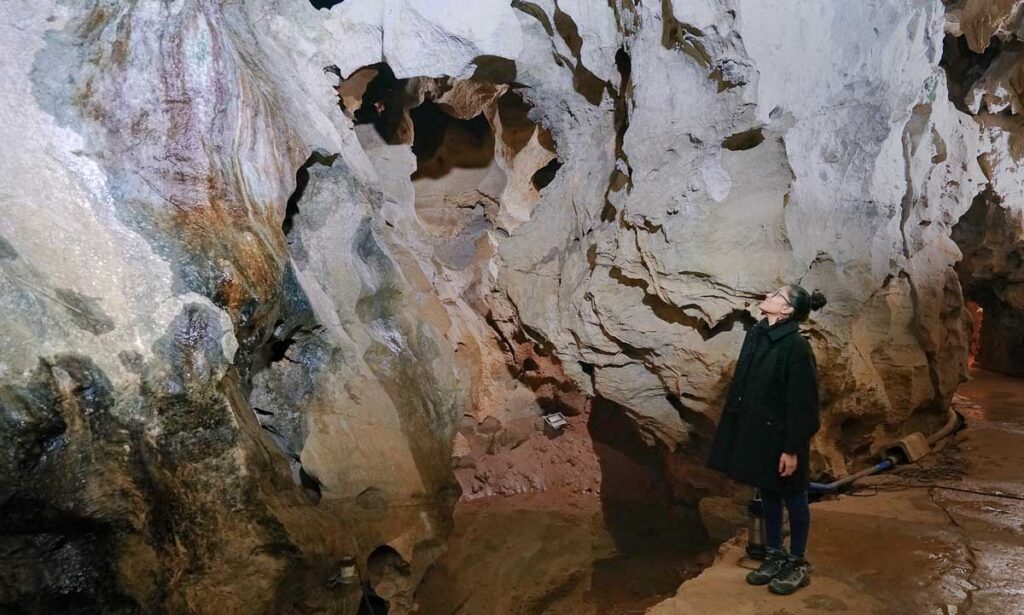
The suppressed Geography geek in me was geek-ing, hard! Prior to 1978, no one had ever seen the inside of Inazumi! The cave was formed 300 million years ago and was submerged for 300,000 years after the volcanic eruption of Mount Aso.
Today, you’ll find a 2km-long underwater cave system made of twists, turns, pockets of natural water, and prehistoric-looking rock formations making it a super fun space to explore.

Can you spot the smiley face?
For added fun, you can book a sauna experience, on-site. The owner will even arrange for you to dip into the 16°C cave water afterward! Snorkelling and diving sessions for beginners to advanced divers are also open for pre-booking if you’re looking to venture even deeper into the cave!
Entrance fee: ¥1,500/pax
Opening hours: 9AM – 5PM
How to get there: 25-min drive from Harajiri Waterfalls (Google Maps)
Usuki’s Stone Buddhas

These 61 Stone Buddhas are believed to be carved into the cliffs of Usuki over 1000 years ago and declared a National Treasure in 1995.
I found myself really enjoying the serenity of this little park and especially appreciated the audio guide that can be played on any mobile device that can read a QR code.
*Pro-tip: Come during Sakura season to be greeted by the beloved pink blooms.

Drop ¥100 into the box and have a go at reading your fortune for 2024. My forecast wasn’t great but at least it says that Soy Sauce is my lucky potion for the year — good thing I can find loads of this made locally in Usuki!
Cost: ¥550/pax
Opening hours: 9AM – 5PM
How to get there: Take route 502 if driving from Inazumi Underwater Cave. (Google Maps)
Lunch at Usami

I worked up quite an appetite after tracking down Buddhas. Lucky for me, right at the bottom of the hill, is Usami — a restaurant that prides itself on using locally sourced ingredients.
Fun fact: Usuki City manufactures its own soil mix with which lots of organic and local vegetables are grown.

All of the vegetables used in this Seasonal Vege Meal were organically grown in Usuki!
The flavour profile of each dish was unique, to say the least. And the freshness of the ingredients definitely shone through. As a pescatarian/vegetarian, it would be a treat to have meals like this every day.
Back in Singapore, places that solely use clean ingredients are often a feat to find or not easily accessible. If only growing organic vegetables was more commonly practised on our Little Red Dot!
Cost: ~¥2000 for a Seasonal Vege Meal
Opening hours: 11AM – 3PM (last order 2:30PM), Wed – Sun
How to get there: It’s a standalone building right beside the Stone Buddha ticketing counter. (Google Maps)
Kintsugi at Usukiyaki

The cup I selected had a chipped edge!
Usukiyaki is a ceramics studio that has the most ridiculously amazing view of Usuki’s mountains. I’ve heard of Kintsugi since many years back and was so happy I got to try it at Usukiyaki.
At the start of the Kintsugi experience, I was asked to select a piece of ceramic that has a flaw. Over the span of an hour, I was guided by a Kintsugi master to repair this damage using Kintsugi techniques.
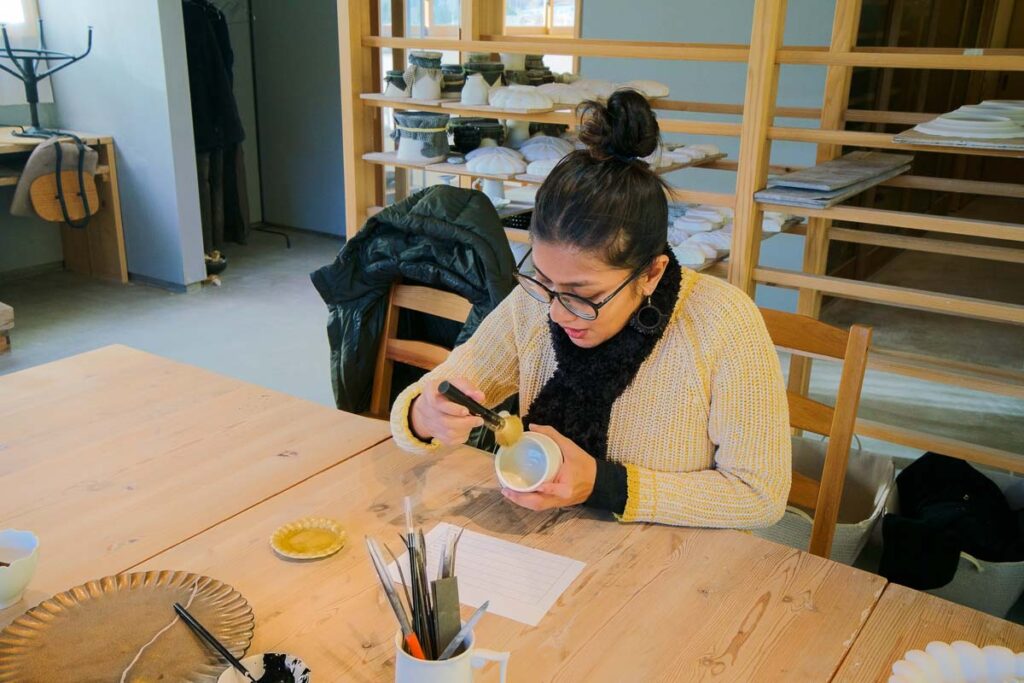
My Kintsugi master said I was so good that he couldn’t make fun of me. But I think he was just being nice cos right after he said that he helped sand down the jagged edges I missed out 😂. Either way, it was all good fun!
I even got to take home the end–product and a DIY Kintsugi kit.
Cost: ~¥11,000/pax (contact them to confirm prices and reserve your slot!)
How to get there: Right across the street from Usami. You’ll see a makeshift bridge that crosses over a little stream. (Google Maps)
Usuki — UNESCO Creative City of Gastronomy

The ruins of Usuki Castle that was then built above sea level.
Many of the towns in Oita were once ruled by Lords. Usuki was one of the very few towns ruled by an openly Christian Lord, Sori Otomo, between 1530 – 1587.
Fun fact: Buddhism was the main religion during those times so having a ruler who was openly Christian is unique to Usuki.
The town is now known for its specialty pufferfish cuisine, locally-produced vegetables, and fermented products such as soy sauce and miso. In 2021, Usuki was crowned UNESCO’s City of Gastronomy in 2021.

While strolling along Usuki’s streets, I had the pleasure of meeting this lovely lady of Kani Shoyu. She’s been running this soy sauce shop since the 1970s (and yes, that’s a picture of her on the cash register)!
I got three travel-sized bottles of soy sauce here (¥1000) and was gifted with a sachet of miso paste!

Fun fact: Fire extinguishers along the street have little QR codes on the sides that you can scan to read a short folklore or local spooky story!
Usuki City Council makes it a point to preserve the traditional architecture of its buildings (as they should, because the old town look is just gorgeous)! Walking along the streets of this town felt like I was transported back in time.
*Pro-tip: Come during the weekends as many businesses close mid-week.
Kani Shoyu
Opening hours: 9AM – 5PM, Wed – Mon
How to get there: 5 min walk from the ruins of Usuki Castle. (Google Maps)
Where to Stay in Beppu, Oita
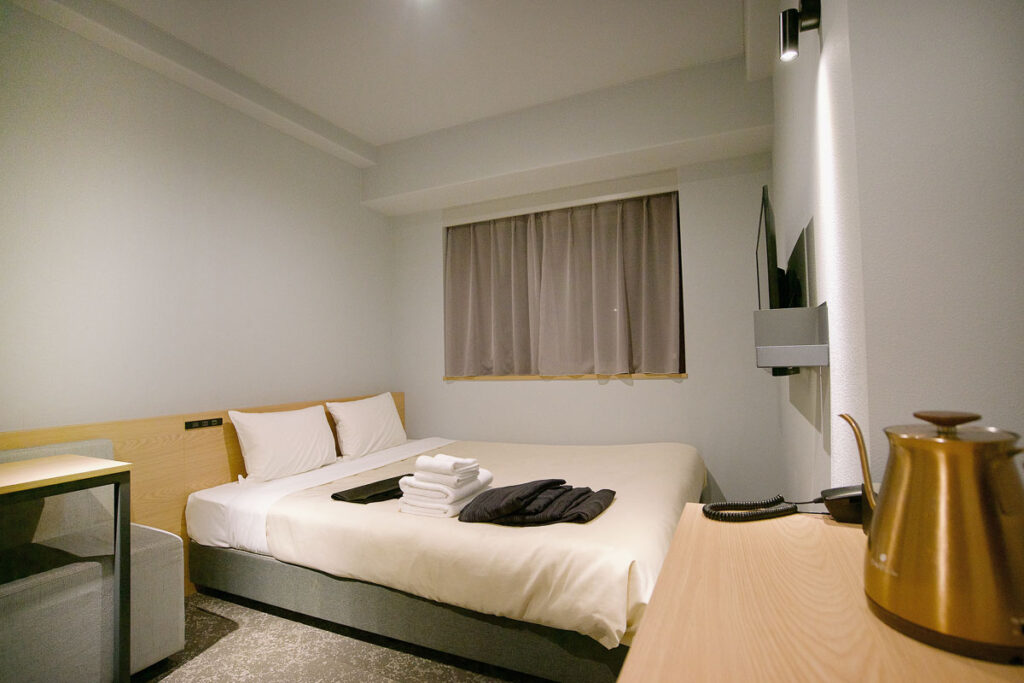
Exhausted from a day of looking for things to do around Oita, I finally got to Beppu Amanek Inn and called it a night.
The hotel comprises two separate buildings side-by-side. One is the main building — Amanek. While the other is where I stayed in — Amanek Inn. The latter is the more affordable option but comes with the same access to amenities such as the rooftop pool, onsen, and buffet area.
After making tea and taking a hot shower, I thought I would crash. But the allure of Beppu got to me and I ended up scouring the lively streets for food!
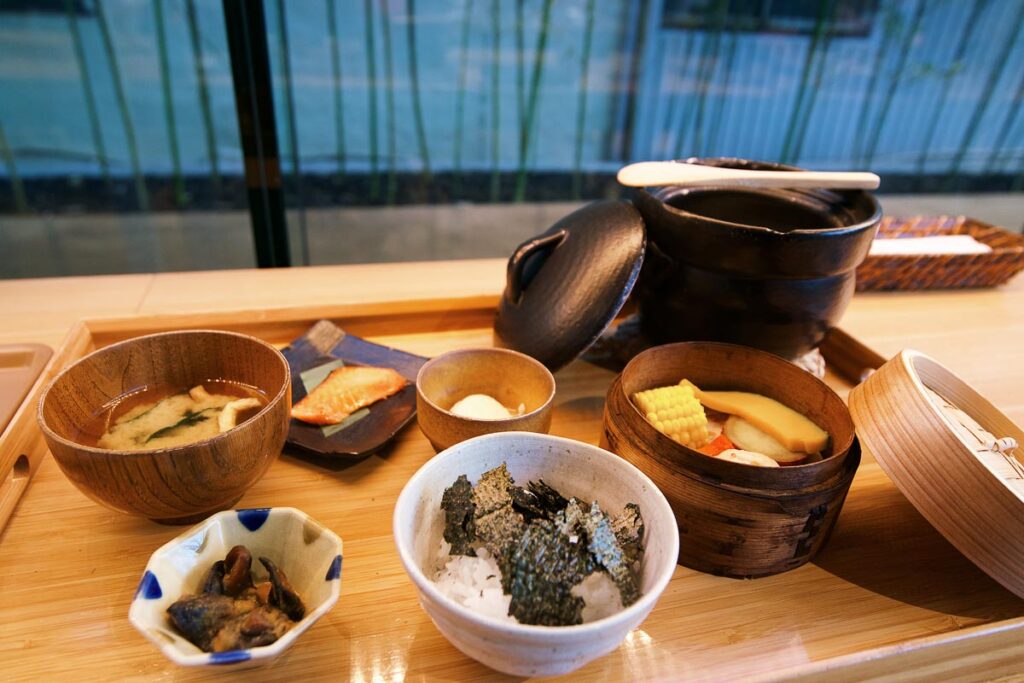
The staff were really accommodating to my pescatarian diet and prepared a steamed vegetable dish during breakfast.
If you’re wondering what’s there to eat in Beppu, check out Ichiriki for BBQ meat or Itto-ryu Ramen for halal local spicy ramen — both places are recommended by locals
For breakfast the next day, I popped by the hotel’s dining area. Tables have to be pre-booked the day before at the reception!

The rooftop pool and onsen deserve a special mention as the views, especially during sunrise, are spectacular!
Cost: From ~¥11,000 (incl. breakfast)
Address: 6-35 Ekimae Honmachi, Beppu, Oita 874-0934, Japan
Day 3: Beppu & Usa
Beppu Ropeway

Beppu Ropeway is one of the main attractions in Beppu! The ropeway (or cable car) takes you up to Mount Tsurumi which is kind of the mid-point between Mount Yufu, Beppu prefecture, and Oita prefecture.

After a 10-minute ride up to 1300 metres above sea level, you’ll be on Mount Tsurumi! It was pretty chilly up there (~1°C), lucky I had hand warmers in my pockets! Follow the signs to Mount Yufu viewing spot and marvel at the hoarfrost — frozen water vapour that looks like tiny crystallised flowers.

There are other paths to the different viewing areas so I took my time to go to each one. Cars come in 20-minute intervals but you can spend as long as you’d like up there!
Cost: ¥1,800 (round-trip)
Opening hours: 9AM – 5:30PM
Beppu’s Hells

The Umi Jigoku or the Sea Hell.
There are seven huge onsens (or “hells”) scattered around Beppu and each of them has a different characteristic. They might come in different colours and consistencies due to varying chemical reactions. Not to be confused with onsens, these “hells” boil at 100°C and aren’t for dipping!
The Umi Jigoku is the largest one and is a must-visit. The site of Umi Jigoku also has a permanent exhibition where you can learn a little bit more about the history of the “hells”.

The Akaike Jigoku.
Located on the same site is Akaike Jigoku which is bright red due to the presence of iron. The stark contrast is odd given the proximity to the large, blue, Umi Jigoku. I guess some things about nature, we’ll never understand!

The mud-based Bozu Jigoku giving off zen vibes.
Out of all the seven, the most spectacular ones recommended by locals are the Umi Jigoku and Bozu Jigoku. I decided to pop by Bozu Jigoku which, turned out to be my favourite! I loved the muted colours of the mud against the lush green trees.
Unless you’ve set aside an entire day to explore all seven hells, I personally recommend buying individual tickets to visit the sites of Umi Jigoku and Bozu Jigoku.
Cost: ¥450/pax for each jigoku
Opening hours: 8AM – 5PM
How to get there: 17 min drive from Amanek Inn
“Hell”-Steamed Cuisine for Lunch

“Hell”-steamed cuisine refers to food that’s been steamed using the heat from hot springs! From mixed seafood platters to pizza, everything can be cooked using this method.

On top of this already mind-blowing concept, the restaurant takes it one step further by offering hot foot baths so you can enjoy a relaxing onsen dip over dinner!
There are a few local-recommended restaurants around Beppu that offer this experience to travellers. This particular place, Chinetsu Kanko Labo Enma, is one of them.
Cost: ~¥2,250/pax
Opening hours: 10AM – 7PM
Sake at Koku No Kura

The green bottle is ‘spicy’ sake while the white one is ‘sweet’!
Part of the Wakabotan brand, Koku No Kura is a Sake Brewery located in the quiet town of Usa, Oita! If you’re looking for one final hidden gem in Kyushu, this is it!

I came for a distillery tour and learned a lot about the sake-making process. Then I stayed for sake tasting! I loved the warmth from the ‘spicy’ sake but also kind of liked the sweetness of the other one — it was really easy to drink.
The large range of sakes and craft beers available for purchase at Koku No Kura make for a great gift. I would have gotten a bottle of each if I had more luggage space.

You’ll have to make arrangements with the brewery if you’d like a tour of the distillery or a sake and craft beer tasting. But if you’d like to hang out at the cafe before catching a train out of Oita, you can drop by anytime during opening hours.
*Pro-tip: For those who are driving, get a glass of Amazake instead! It’s a non-alcoholic by-product of the sake-making process and doubles as a beauty-drink.
Entrance fee: Free
Opening hours: 10AM – 5PM, closed on Wed
How to get there: From Beppu, take route 387 to Usa. It’s about a 40-minute drive. (Google Maps)
Getting Back to Fukuoka

Usa Station is just a few minutes’ drive away from Koku No Kura Sake Brewery, so I headed there and hopped on a train back to Fukuoka!

Unlike the Yufu Scenic Train to Oita, this 4:49PM Sonic Limited Express was packed with office workers. So I recommend booking a seat for an extra ¥1,1500! The ride was mega comfortable. I enjoyed sunset views from my window seat and 2 hours flew by before I realised I was back in Fukuoka.
Cost: Free with JR Pass or ¥2,000 for a single ticket
One Night in Fukuoka
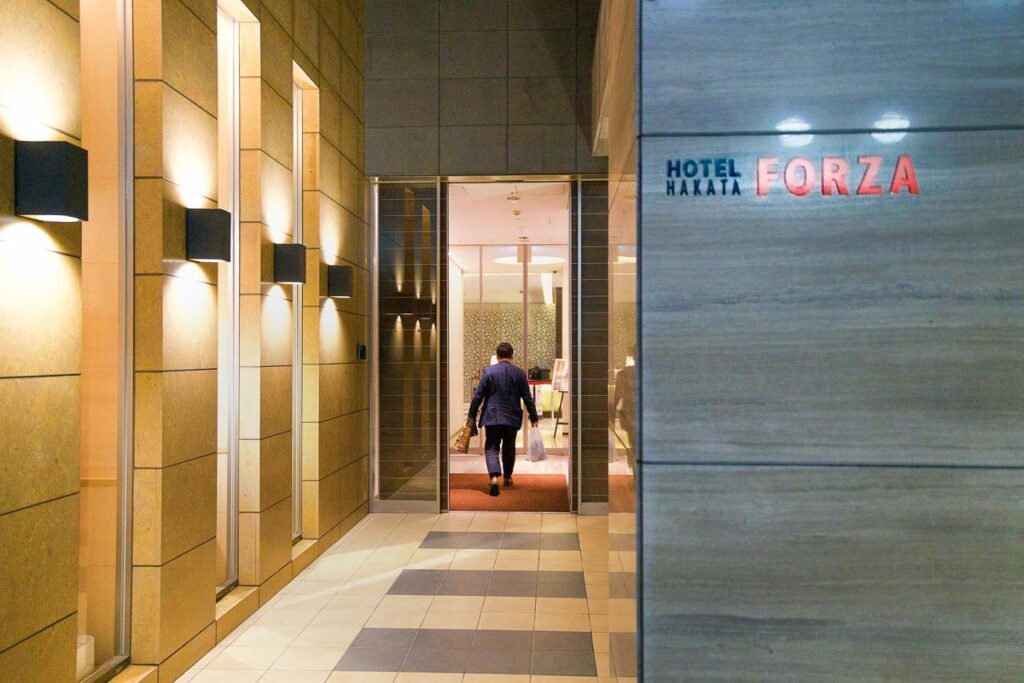
If you’re catching an early flight out of Fukuoka Airport, staying a night near Hakata Subway Station in Fukuoka makes total sense.
I allowed myself some recovery time at Hotel Hakata Forza — it’s 2 minutes away from the subway and it takes less than an hour to get to Fukuoka Aiport’s International Terminal from the hotel.
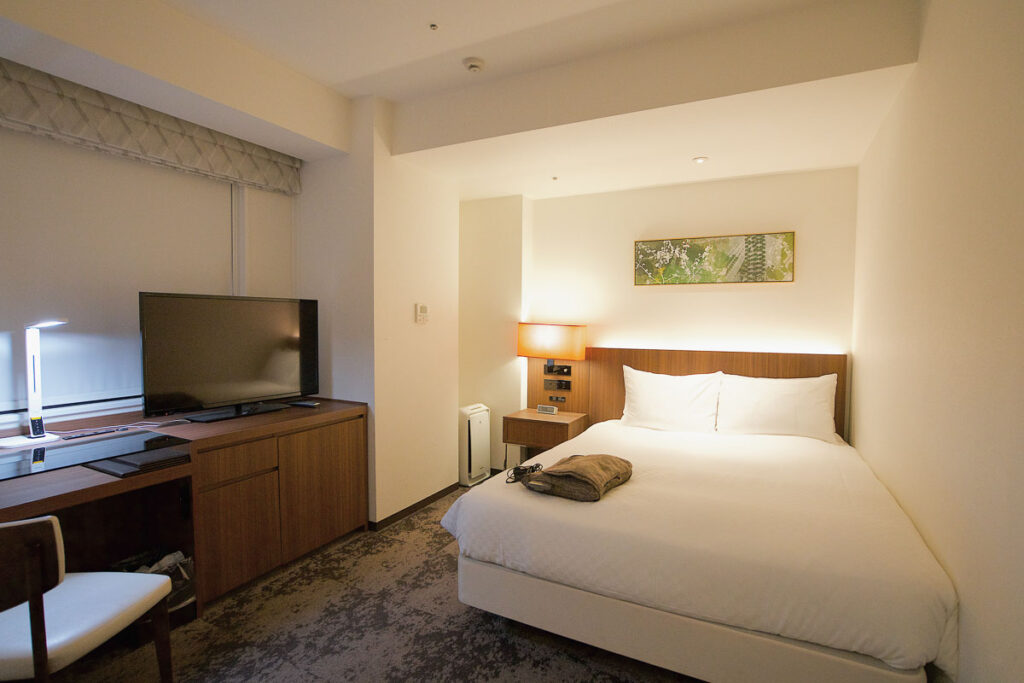
The best part about the room is the back massager! I fell asleep within minutes of switching it on. Plus, breakfast starts at 6AM — perfect timing for a bite before catching a morning flight.
Cost: From ~¥12,800 (incl. breakfast)
How to get there: Exit Hakata Station where the taxi waiting area is. Walk 2 minutes to Hakataekichūōgai 3-gōsen street (博多駅中央街3号線). (Google Maps)
For me, visiting Oita has definitely made me see a seemingly familiar country with fresh eyes. I hope the same can be said for you!
With endless onsen spots in Oita and a bounty of hidden gems and things to do in Kyushu, this quieter part of Japan has many more hidden gems to uncover. The next time you’re planning a Japan itinerary to Osaka, or Tokyo even, why not venture a little further out, you never know what you might find!
Which other parts of Japan would you like to explore? Let us know in the comment section below!
This post was brought to you by Tourism Oita as part of a media familiarisation trip.





